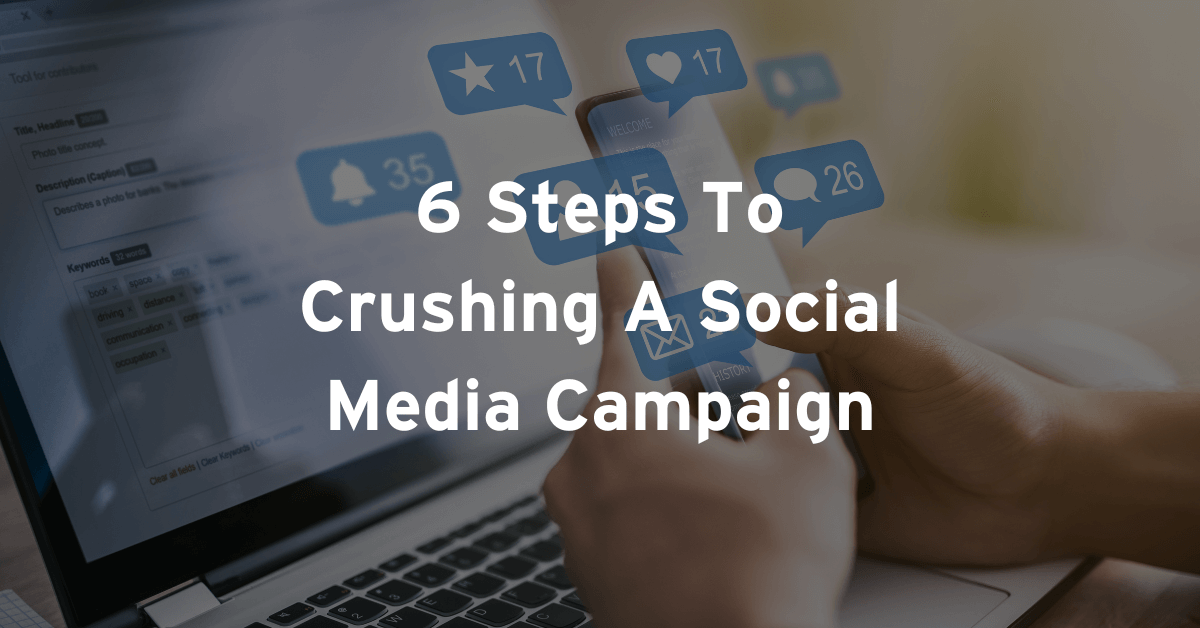A lot of people who use social media for business do so casually, without have a specific strategy. What’s the difference between passively marketing with social media and a social media campaign? The main difference is that regular social media use is good for brand awareness and generating engagement with customers, whereas a social media campaign is using social media with a specific goal in mind and a plan to reach that goal.
What steps do you need to take to plan a success social media campaign?
Step #1 – Set your goals

Again, the main difference between casual social media and a social media campaign is have one specific goal. Why are you running this campaign? Answering the “why” is the determining factor for the rest of your strategy.
What are some common goals for social media campaigns?
- Increasing brand awareness
- Acquiring leads
- Driving traffic to a website or funnel
- Finding new customers
- Increasing sales
- Introducing a new product
Once you have defined a goal, it’s important to connect that goal to specific measurable metrics. Using the SMART method can be particularly effective. SMART goals are Specific, Measurable, Attainable, Relevant, and Time-bound. Without making goals SMART, it’s difficult to formulate an actionable strategy. It can be most helpful to go with quantitative metrics based on numerical data.
Step #2 – Figure out the who

Targeting the right people is essential to a campaign’s success. It’s critical to figure out who you want to connect with this particular campaign. Is the target for this campaign a current customer? Are you looking to expand your customer base?
Looking at your campaign goals should help you to find your target audience. The more information you can connect with your target audience, the better. Many people find having a buyer persona helpful. A Look-Alike report might also be helpful, as it can help you to discern which demographics to target.
Step #3 – Choose your channels

Many social media campaigns occur across many channels, but usually they have tp focus on one or two major channels. Your campaign goals and target audience will inform which channels you should focus on.
Are your target audience decision-makers within businesses? LinkedIn might be the best fit! Instagram is great for visual products or for targeting younger consumers. (Want more information on figuring out what social channel is a good fit for you? Click here!)
This is just one reason why it’s important to keep track of campaign analytics. Data from past campaigns can help inform present-day channel decisions. There isn’t much reason to focus on a channel that historically hasn’t worked for you.
Step #4 – Content

What is the message of your campaign? Look at your campaign goals and audience to nail down the appropriate tone and messaging of your campaign.
Here are some questions to ask yourself about campaign content:
- What type of content is best for your preferred channels? Video, or static image?
- What tone of content does your target audience respond to? For example, should your tone be more informal?
- What calls to action are going to be effective in reaching your campaign goals?
Step #5 – Plan out the when

Part of what makes a campaign a campaign is that there is an order of operations, or a series of steps. The next stage in planning a successful campaign is figuring out the flow.
Unlike some marketing campaigns on other channels, social media campaigns often require a calendar of scheduled content. There is usually a lot of moving pieces, and the order that things are posted is important. Social media campaigns don’t necessarily replace the preexisting stream of outgoing social media content. You’ll find it can be invaluable to have a schedule for integrating a campaign with the regularly scheduled content.
Step #6 – Analytics

Keep track of your numbers! Use the campaign metrics and goals you set earlier to prioritize your analytics. Keeping track of a campaign’s data and analytics will help you to measure the campaign’s success. It can also significantly help you to learn more about your customers and the marketing channels at your disposal.
What elements of a social media campaign do you think are most important? No matter the answer, these six steps are vital to setting up a successful campaign. If you want to know how a social media campaign can help your business, give us a call today.





